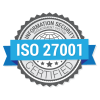Often the data available on your Telecom network infrastructure is so scattered that you are unable to negotiate better prices for lack of information.
There are so many factors and complexities to consider that is inevitable to be overwhelmed. How to determine the optimal price to aim for when negotiating new deals or renewing existing ones?
If this is a concern in your business, this article is for you.
We will explore here the key elements of an effective fact-base to negotiate better prices by:
- Knowing your inventory
- Understanding core cost analysis
- Identifying price variance in inventory products
- Using market price benchmarking
- Relying on supplier billing performance
The outcomes from these analyses will give you the optimal prices to aim for and facts to help you lead negotiations with confidence.
Let’s get started.
Why does this matter?
Prices for telecom infrastructure tend to decline each year. So, when it comes time for contract renewal, you can generally expect to be offered a 5%-10% discount on prices without much discussion.
However, by using the methods in this article you can raises the likelihood of significantly better pricing, which could improve upwards of 30-40% range, giving you an edge for an organization’s strategy of cost reduction.
Knowing your inventory
To negotiate better prices, you got to know what you’re purchasing, right? Your inventory is the basis for every activity leading up to negotiations.
Your inventory of network infrastructure should include data identifying:
- Where individual sites are located
- When the site was connected
- Service identifiers (the identifying codes used to identify circuits, ports etc.)
- Service configurations (bandwidth speeds & performance SLAs)
- Equipment identifiers (the identifying codes used to identify routers, switches etc)
Having this inventory in front of you yields quick answers to interesting questions about your services and cost components and provides the basis for pricing analysis.
Pro Tip: from a financial perspective, should all of these sites be included in the next contract? We’ve seen organizations with subsidiaries or franchisees where their own services have found its way into head office’s invoices over years. Take a look to see if there’s any sites that don’t belong to your business.
Core cost analysis
Instead of dragging along all the extras that have attached themselves to your services over the years, let’s go back to basics and ask what functions are absolutely essential.
There’s plenty of scope here for questions:
1) Are the services even active? Over the years, network sites and services get deactivated but for various reasons continue to be charged on the invoice. Make sure those services don’t get dragged along to the next contract.
2) Does the service configuration make sense? It’s very common for bandwidth misalignments to happen between site capacity and its port speeds. If your port speed is less than site capacity, you may be paying for additional bandwidth you can’t use anyway.
3) Are the products you’re paying for enhanced SLA performance (such as enhanced fault response times) really necessary? In the example of enhanced fault response times, there are usually multiple vendors who play a part in fixing issues and the enhanced response time being paid to supplier A isn’t going to cause supplier B to do their part any faster.
Product – Price Variance
Check out the prices each network site is paying. You’ll find that different sites with the exact same products are paying very different prices.
Where sites are located plays a part in pricing so make sure to compare sites that are within the same region.
We’ve seen sites within 1 mile of each other paying 60% different pricing! These variances can account for millions in annual charges. Always ask yourself, why does this price variance occur?
Of course, there can be valid reasons for these variances that come down to various engineering considerations.
From a procurement perspective, price variances happen when:
a) contracts aren’t negotiated at the same time
b) lack of pricing visibility while negotiating a new service
You can quickly gain the advantage by understanding the variances you’re paying for today. These variances become a data point that helps you calculate what the optimal pricing range should be for your services.
Market Price Benchmarking
It’s always good practice to know how your prices compare against the market.
With that said, quality data can be hard to come by. Vendors work hard to protect their IP and not allow their pricing inputs and algorithms into the market.
Most benchmarking providers (including ourselves) use proprietary datasets to create a “close enough” figure. This is the case because it’s generally impossible to have sufficient data from customers & vendors to compare all the various engineering considerations.
So, the approach that benchmarking providers take to their datasets matter.
Using Thinking Machine as a benchmarking provider, we run comparisons by:
- Site capacity and port bandwidth
- Performance SLAs
- Regions
- Geo-distance (measuring the physical distance between sites)
From this approach emerges a pricing range that helps guide where your optimal pricing should be.
Supplier Billing Performance
Lastly, always keep an eye on how well your supplier performed with billing accuracy.
The benchmark for billing mistakes is 3% of all invoiced charges. How does your vendor compare against that benchmark?
Running a historical billing audit is a useful tool to identify refunds you’re owed from the past. Apart from the nice windfall of savings, it also gives you extra ammunition to hold your vendor to a higher standard during negotiations which often translates to monetary benefits.
So now that you’ve seen all the key points to focus on to guarantee the best deal on a negotiation for your telecom-network infrastructure services, let’s do a recap on what you can achieve by following these recommendations:
- You’ll strip out the unnecessary products & services from your inventory, bringing along only the essentials into a negotiation
- You’ll identify the low & high prices you’re paying for your existing services (product price variances)
- You’ll know how your prices compare against the market
- You’ll have stats to prove your vendor’s performance (or lack of) in billing accuracy
Sounds too good to be true? The value in savings you can generate over the life of the contract can be a healthy ROI for the leg work in answering these questions.
But don’t forget, there is software available on the market to help automate that entire process for you! Get in touch with Thinking Machine and start saving today.


